The wait is finally over. On Tuesday our first walkers will be setting off on different parts of the Path: from the Source to Staines. We wish them all well.
And we welcome back our hotels; and the pubs, restaurants and cafes that can now serve indoors; and the museums. Life is definitely getting back to normal. Now all we need is some sunshine!
Despite a relatively wet May, the Path seems to be in good shape. There have been no flood alerts – although there have been some in south-west England. Volunteers from the National Trail office have been out maintaining the route near Tadpole Bridge. If you pass any volunteers, do stop to say thank you.
The biggest concern this week was the report of problems with the train service on the Great Western Railway following the discovery of hairline cracks on some of its trains. Services from London Paddington to Bristol are severely disrupted as many trains have been withdrawn. This could impact anyone trying to get to Reading, or Swindon (for Kemble). If travelling by train next week, please check for the latest news.
Goring and Streatley Regatta is set for July 17. We have added that to our events page.
A new online exhibition entitled “Where Smooth Waters Glide” has been created by the Berkshire Record Office to mark 250 years of caring for the River Thames.
It has been confirmed that Madness will open Henley Festival on September 15. The festival runs until the 19th. Accommodation in and around Henley that week is likely to be difficult to obtain.
A new BBC2 series launched this week entitled Kew Gardens: A Year In Bloom. The title says it all. If you’re on the right bank of the Thames Path you will pass the entrance. It’s well worth spending an afternoon there. And, if you can’t, there’s always the I-Player.
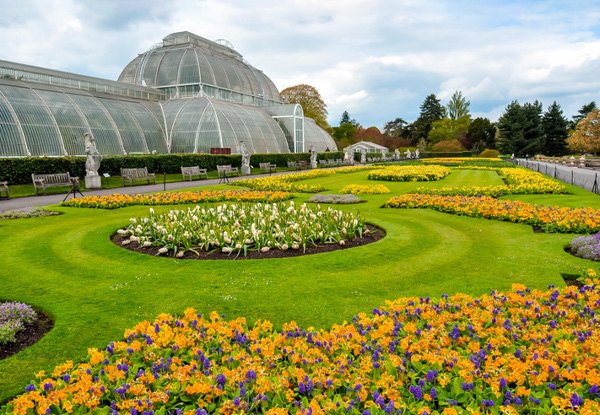
The story of the week was the tragic episode of a baby minke whale which had managed to swim upstream as far as Teddington. First spotted at Richmond lock where it was stranded on boat rollers, it managed to free itself and was later found further upstream at Teddington where it became entangled in vines. Despite rescue attempts involving the RNLI and the British Divers Marine Life Rescue (BDMLR), the whale’s condition deteriorated and was put down by vets.
Quite why whales, and seals for that matter, swim upstream is explained in a podcast available on Spotify by Mary Tester from BDMLR and Alison Debney from the Zoological Society of London.
We reported last week on the diversion of a footpath away from the Thames Path between Clifton Hampden and Dorchester as a result of work being undertaken by Earth Trust. You can now read more about the River of Life II project here.
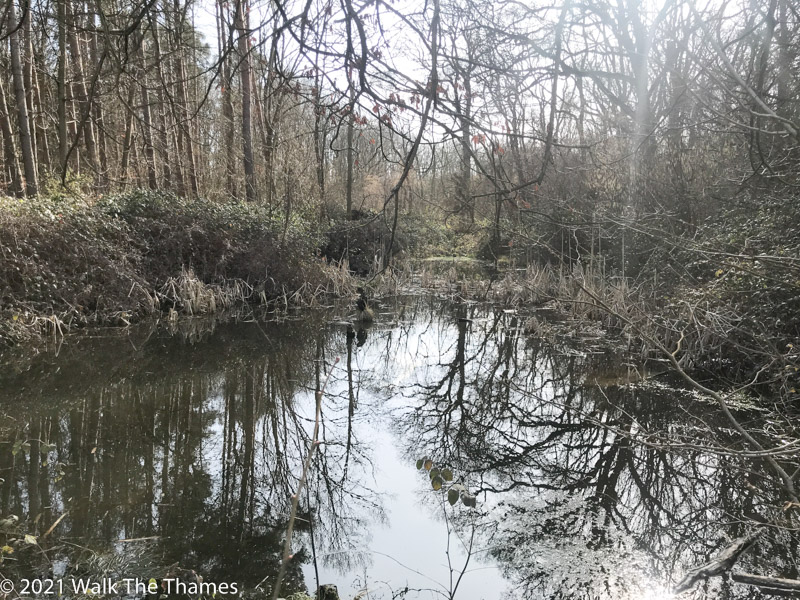
A 250 metre bronze strip has been unveiled at More London, on the right bank as you approach Tower Bridge. It’s called The Merchant Line and features an account of the area’s rich maritime history.
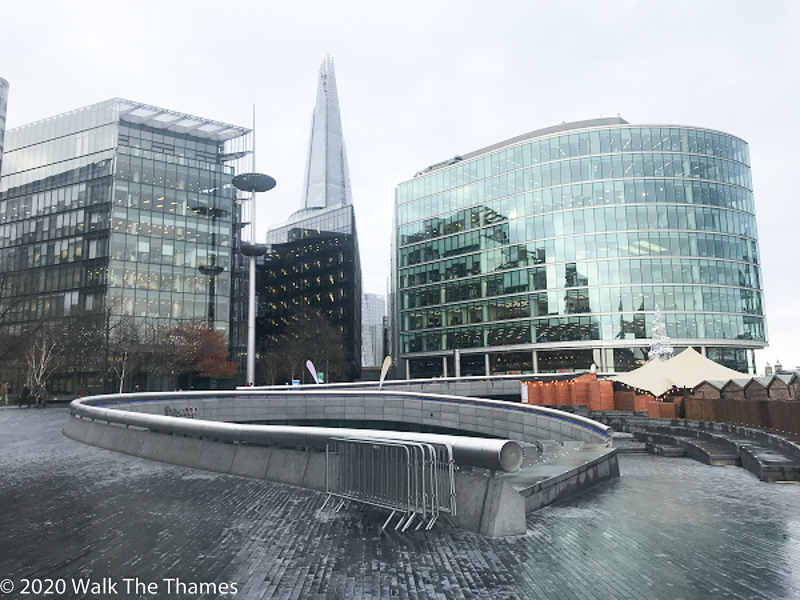
As from next week we will be up and down the Thames Path supporting walkers, we decided to stay close to home this week. We are therefore bringing you a feature on Mapledurham which lies tantalisingly close to the Thames Path. More of how to reach Mapledurham later.
The village, if indeed it is large enough to be called one, is dominated by the manor house which was built between 1585 and 1610 by Sir Michael Blount, after his father, Richard Blount, purchased the estate in 1490. Remarkably, the estate has remained in the same family ever since. The current owner, John Eyston, is the grandson of Agnes Darrell-Blount.
The house, built in late Elizabethan times, takes the classic E shape in honour of the then Queen. This shape cannot be appreciated from the Thames Path where only the back of the house can be seen. But it is noticeable as you approach it from the farm road leading from Caversham, although it is some distance away. Whilst it is normally possible to see inside the house, the estate has remained closed throughout Covid and remains so. But there is still plenty see. The pictures shown here were all taken this week (well, except for one).
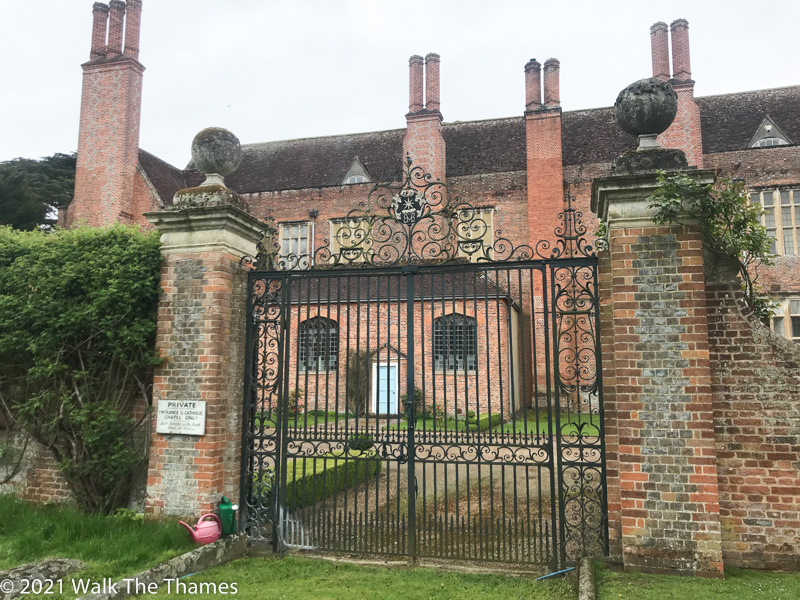
Alongside the house is the church of St Margaret. Although the present church dates back to the late 13th century, it was heavily but sympathetically restored in 1863 and little remains of the original church.
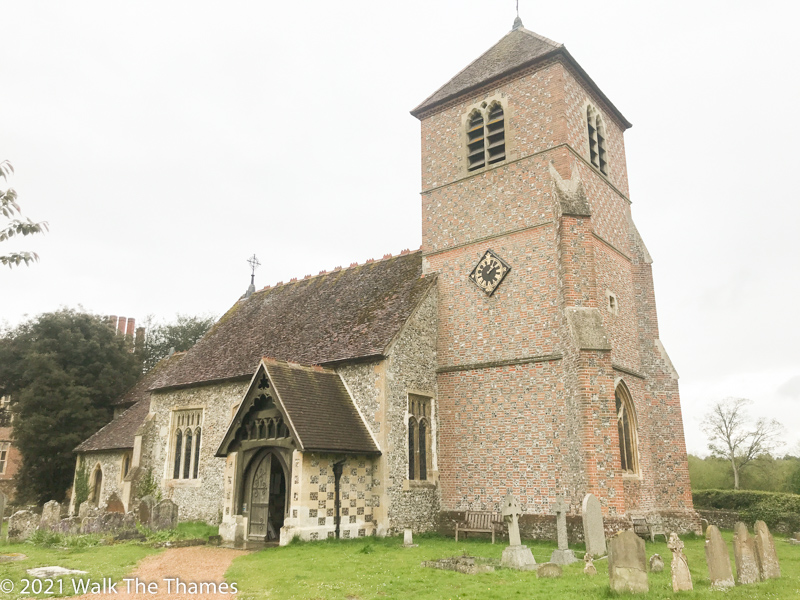
The church possesses a rather unique feature: the south aisle is closed off. When the estate was purchased by the Blounts, the aisle was intended to be their burial place and belongs to the house. Through the reformation, the family remained staunchly Catholic, housing secret masses at great personal risk. There are priest holes in the house. It has meant that, for the last 400 years, the aisle has remained closed off from the rest of the church. Access to the aisle is from a separate entrance. In fact, there is a chapel inside the house. The sign on the rear entrance says “Entrance to Catholic Chapel Only. Last Sunday in the Month. Mass at 6pm” .
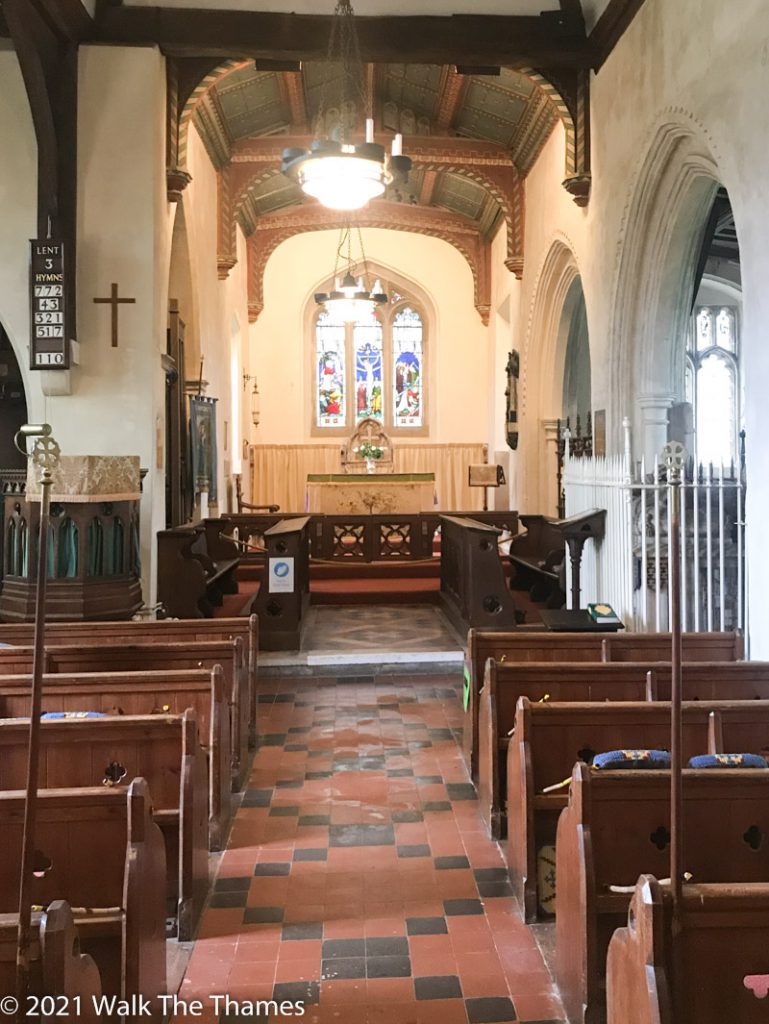
Away from the house, and visible from the Thames Path, is the famous watermill. The current mill was used to grind flour ever since it was built in the 14th century. In 2011 work started on installing an Archimedes screw thread turbine which can just be seen in the picture below. This now generates electricity which feeds the National Grid.
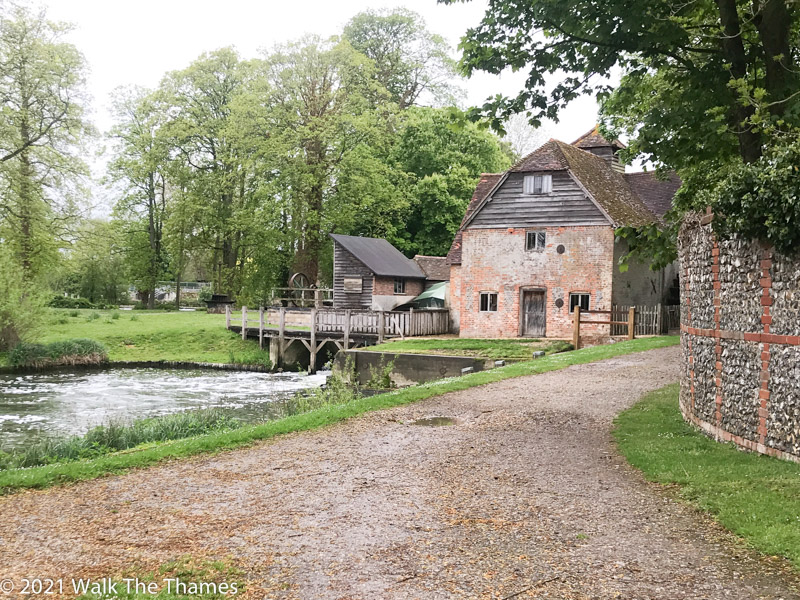
Readers may be unwittingly familiar with the watermill from a scene in The Eagle Has Landed, starring Michael Caine and Donald Sutherland. Many of the scenes were shot in Mapledurham including the piece when a disguised German soldier jumps into the water to save a little girl who had fallen in. He dies and his uniform is revealed thus giving away the plot. It’s a film well worth digging out just for some of the scenes around Mapledurham – although I can assure you that there’s no pub now!
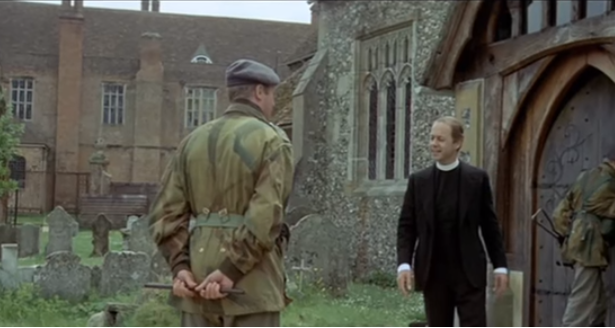
Mapledurham House has been used as a set for many other film and TV productions including Midsomer Murders, Miss Marple and, more recently, Hunderby. It’s connection with the arts goes back further. Some believe that the house was the inspiration for EH Shephard’s illustrations of Toad Hall – although they face stiff competition from neighbours Hardwick House and, slightly further downstream near Henley, Fawley Court. And, further back in time, Alexander Pope, used to visit the house. He was besotted by two of the Blount daughters.
There are only a few houses in the village and no shop. But one other building does stand out: the Almshouses. This is a collection of six houses built as a memorial to local man Sir Charles Lister who died in 1613. As you walk by it’s very hard to work out that these are now, in fact, just two cottages.
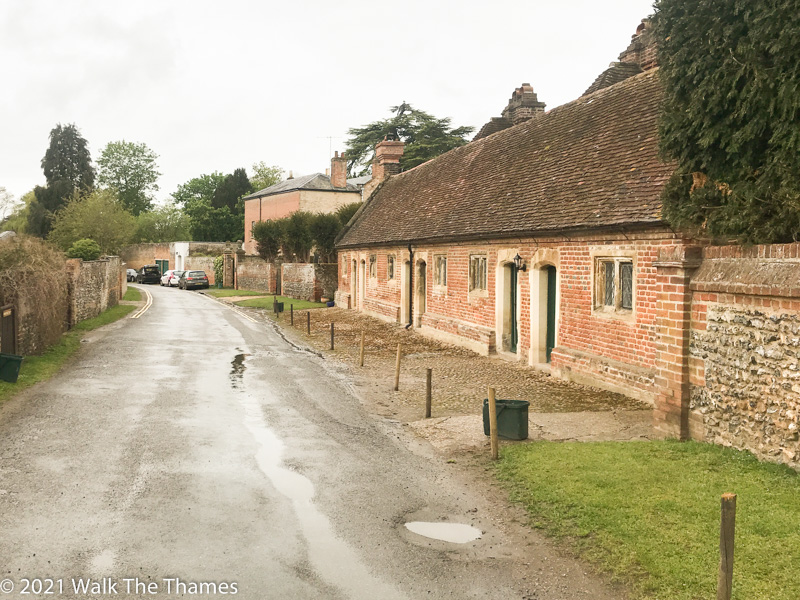
So, how to get there. The Thames Path follows the right bank out of Pangbourne and the house and village are seen from across the water at Mapledurham Lock. Unfortunately there is no way to cross.
However, there is no reason why you can’t follow the footpath on the other side of the river from Whitchurch down to Caversham, passing through Hardwick and Mapledurham estates. Note some road walking is required but only on quiet country lanes or farm roads.
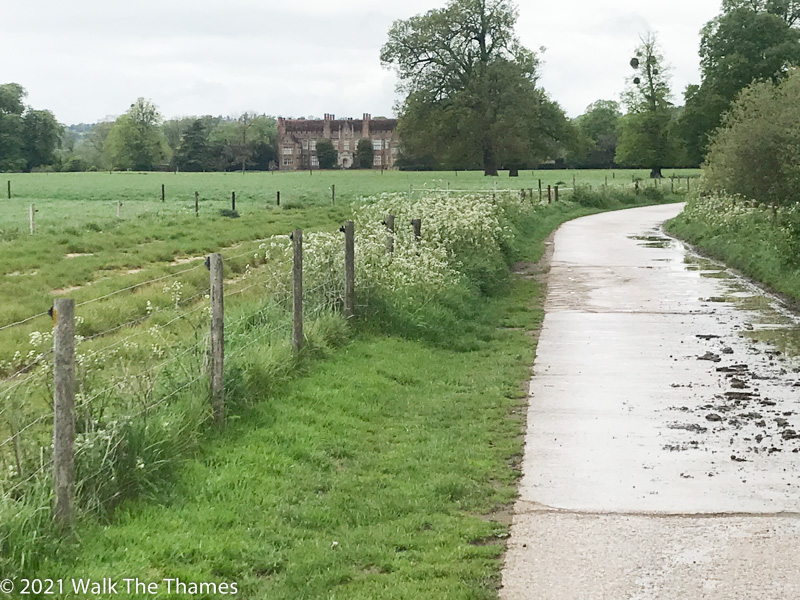
You may have some fun listening to this sea shanty written and performed by The Hammersmith Terrier, a local resident campaigning for a solution to the Hammersmith Bridge closure. Joking aside, it’s a serious issue for local residents as we wait for the ferry to arrive.
Bye for now and hope to see you on the trail!
Ready to book?
| Cookie | Duration | Description |
|---|---|---|
| cookielawinfo-checkbox-analytics | 11 months | This cookie is set by GDPR Cookie Consent plugin. The cookie is used to store the user consent for the cookies in the category "Analytics". |
| cookielawinfo-checkbox-functional | 11 months | The cookie is set by GDPR cookie consent to record the user consent for the cookies in the category "Functional". |
| cookielawinfo-checkbox-necessary | 11 months | This cookie is set by GDPR Cookie Consent plugin. The cookies is used to store the user consent for the cookies in the category "Necessary". |
| cookielawinfo-checkbox-others | 11 months | This cookie is set by GDPR Cookie Consent plugin. The cookie is used to store the user consent for the cookies in the category "Other. |
| cookielawinfo-checkbox-performance | 11 months | This cookie is set by GDPR Cookie Consent plugin. The cookie is used to store the user consent for the cookies in the category "Performance". |
| viewed_cookie_policy | 11 months | The cookie is set by the GDPR Cookie Consent plugin and is used to store whether or not user has consented to the use of cookies. It does not store any personal data. |